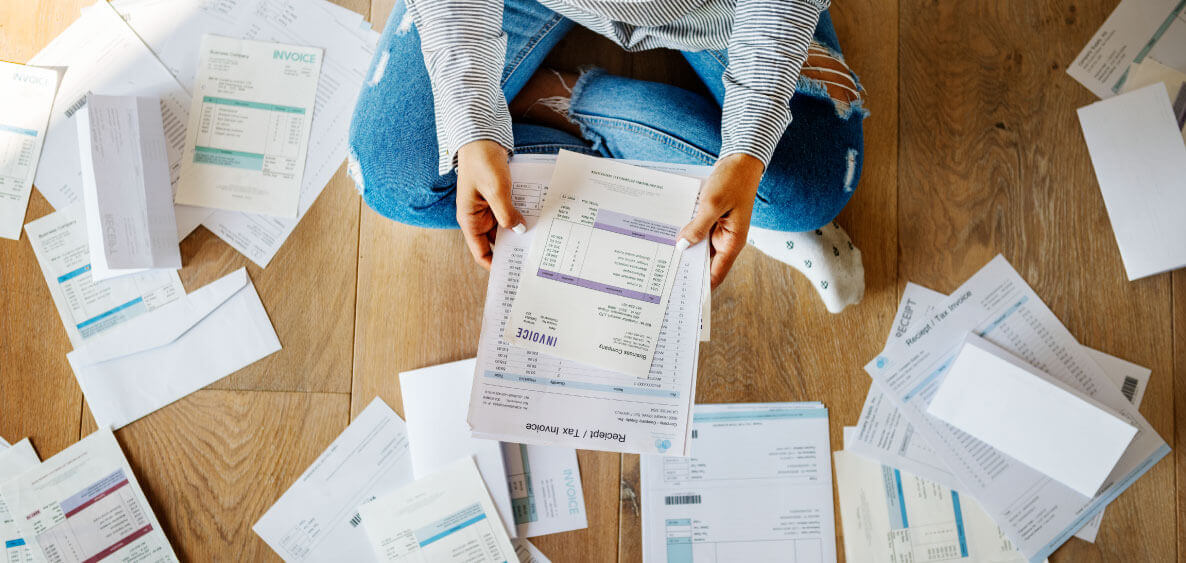
Financial well-being June 1, 2017 By
Financial Well-Being is defined as “a state of being wherein a person can fully meet current and ongoing financial obligations, can feel secure in their financial future, and is able to make choices that allow them to enjoy life” by the Consumer Financial Protection Bureau (CFPB).
Planning your financial future, as well as the legacy you want to leave, can be complicated and possibly an event you may find yourself procrastinating to complete, until you’re faced with no other option but to do it. When you do start planning, it is usually triggered by a life changing event. Why? As humans, we put off making important financial decisions due to a lack of confidence, knowledge, or the fear of making a mistake. Sound familiar? Just remember, you are in control of your financial future and every choice you make can have an impact. Our goal is to simplify your path so you can achieve well-being now, and in the future, by cruising toward the destination you want to achieve while enjoying the journey.
“The best time to plant a tree was 20 years ago. The second best time is now” - Chinese proverb.
Step 1:
Begin with the end in mind! Set your short and long term financial goals, and prioritize by determining the most important financial aspect you want to accomplish. This is the “why” behind what you will be doing. Do you want to get out of debt? Create a rainy day savings account? Save for retirement? Start your own business?
We recommend that you work with your spouse to determine the most important thing you both want to work on at this stage of life. Not married? We can all benefit by having an accountability partner so you may want to consider working with a financial coach who can help you achieve success.
Bottom line - be specific, be realistic, and write down your goals so you can review them and record progress.
Step 2:
Take control of your money by creating a spending plan. This involves being intentional with every dollar you bring in for the month, before the month begins. When you create a spending plan, you’re effectively saying “I chose to put my future needs before my present wants.”
Dave Ramsey says “Do not give up what you want MOST for what you want NOW.” A spending plan should meet your “needs” first, then the “wants” that you can afford. The amount of money you make is not the most important factor in determining future prosperity with finances. How you spend what you make is truly what determines financial success.
Another benefit of a spending plan is the mindfulness of unnecessary purchases by tracking what you spent. Choose a tracking tool that works for you. You want a tracking tool easy enough so you won’t get discouraged when using it. Lastly, always spend less than you earn! The secret is to live within your income.
Step 3:
Begin your “starter” Rainy Day Fund. A “starter” rainy day fund is where you strive to save $500 as quickly as possible to cover expenses that are unexpected, necessary, and urgent.
Money Magazine states “78% of us will have a major negative financial event in any given 10-year period.” For example, your vehicle breaking down is unexpected, necessary, and urgent. This would be an acceptable reason to tap into your Rainy Day Fund. Just remember – if you take money out, you must start saving again.
Once you save $500, then you increase the goal to $1,000. The $1,000 (starter fund) is what you will use in case something goes wrong as you’re completing step three.
Step 4:
It is almost impossible to achieve financial well-being without pursing a debt-free life. While this is the least fun segment along your path to well-being, it will offer you the most stress reduction once you’re past it.
In this step, you will begin to escape debt by paying off all loans except for your mortgage payment. You will focus on paying off the mortgage once you have all other unsecured debt paid off and are contributing 15% or more to your retirement account, which is step four.
The discipline it takes to pay more than the monthly minimum payment every single month until you are debt-free is intense. Just remember - the new shoes are a temporary emotional high, while the debt-free life will be long-lasting and much more rewarding. Besides, when you have no debt to pay, then you can spend money on the new shoes as long as it fits into your spending plan!
How do you eliminate debt the quickest? There are two methods that work really well - the debt snowball and the debt avalanche. To learn more about these two strategies, check out our recent “Escaping Debt” article. The bottom line – use credit responsibly so later you won’t feel overwhelmed with debt obligations.
After you complete step three, then you will come back to step two to work toward a fully-funded rainy day fund which is three-to-six months of your monthly living expenses. Saving for three months or six months depends on your job stability, health, and family status.
Step 5:
Contribute to a retirement account as soon as possible, so the miracle of compound interest can work in your favor.
We all want to have a stress-free retirement where we can do the things we enjoy, have good health, and not worry about money. To make that a reality, start saving now.
Sadly, the vast majority of Americans are not on track to retire when they reach retirement age due to not saving enough. We often think “when I get that higher paying job, when I get that pay increase, or when the children finish school, then I will be able to save for retirement. By that time, it is usually too late.
Get on the right track with retirement by contributing to an employer 401(k) or individual retirement account (IRA) when you are starting your career in the workforce. If your employer will match contributions to the 401(k) then contribute at least the amount needed to get the full company match. Then every time you get a pay increase be sure to increase your contribution before you start getting used to living on the new income. The ideal target is 15% of your pre-tax income to put into a company sponsored 401(k), or the maximum contribution amount allowed for an IRA. Do your future self a favor, and start saving for your retirement today!
Completing these steps will help you on your path to financial well-being so you can grow, enhance, enjoy, and secure your financial life.





